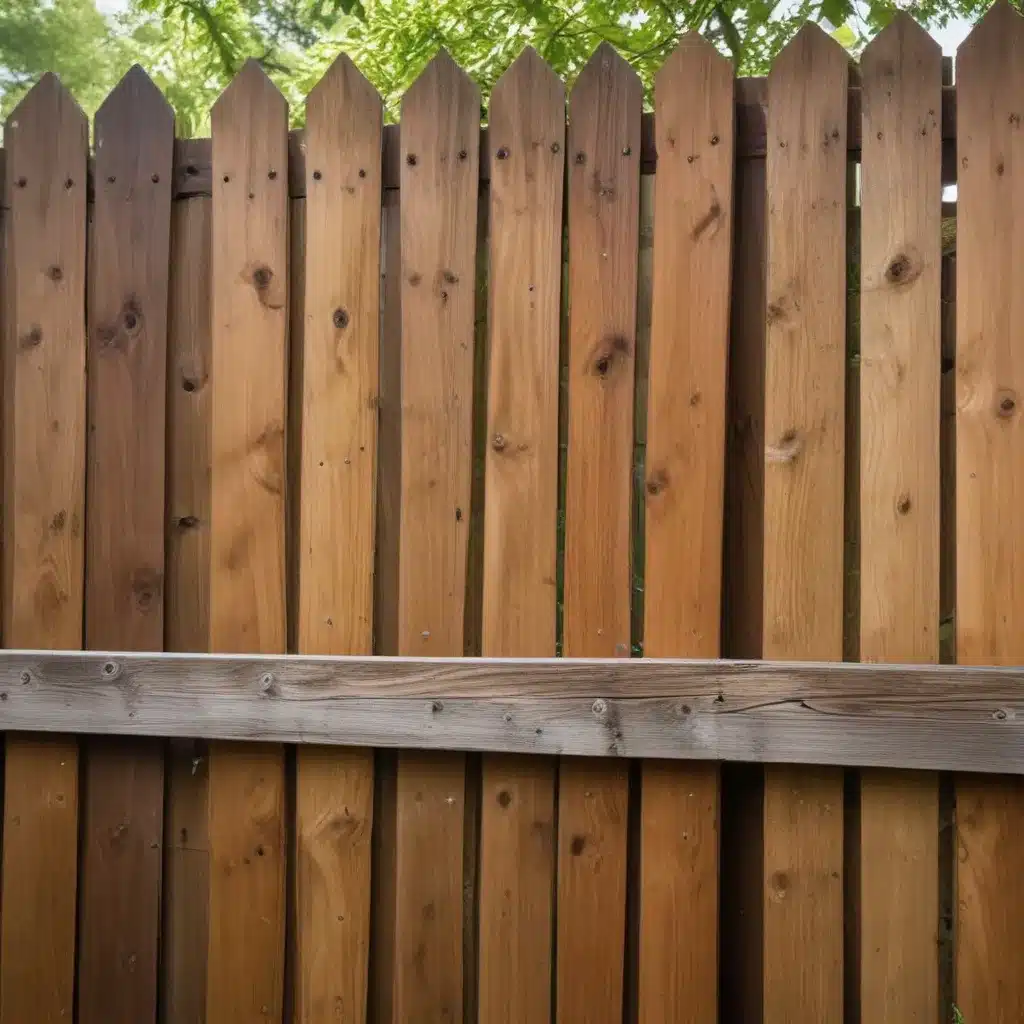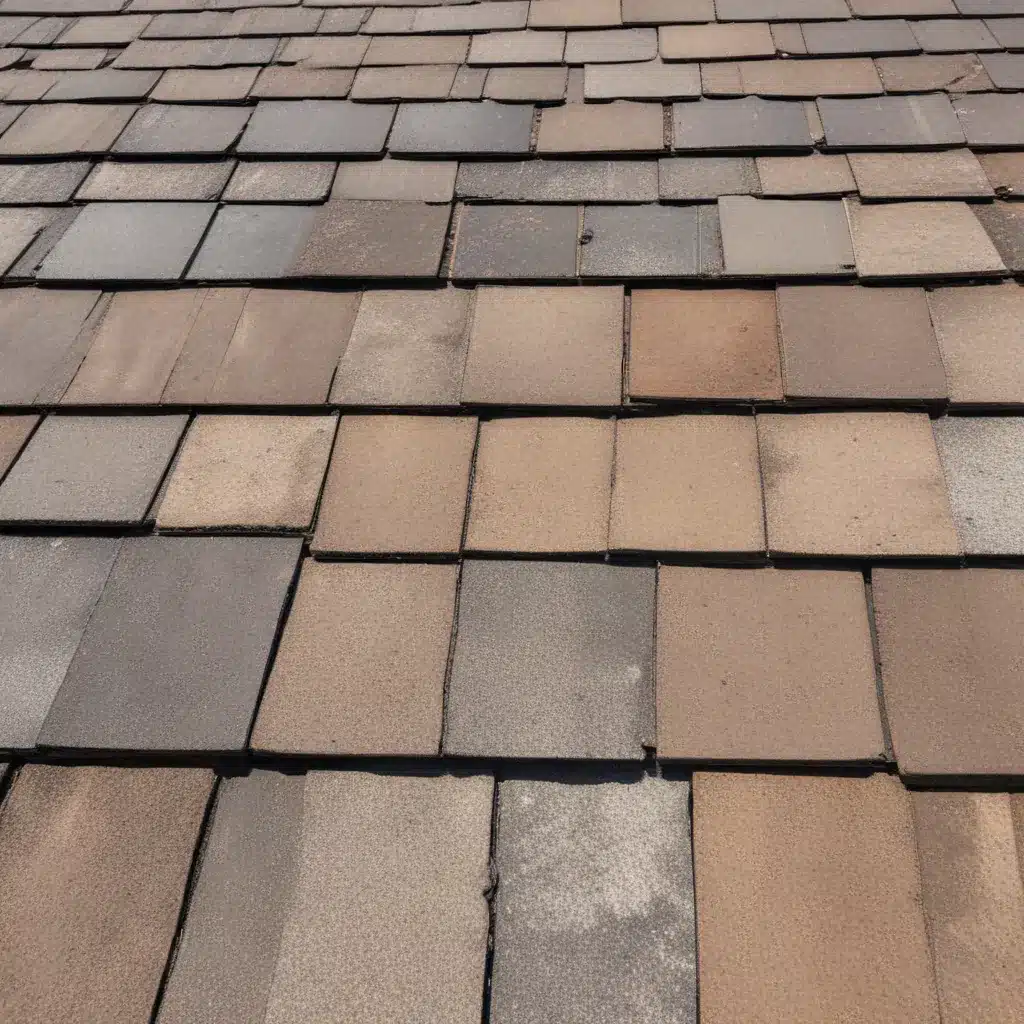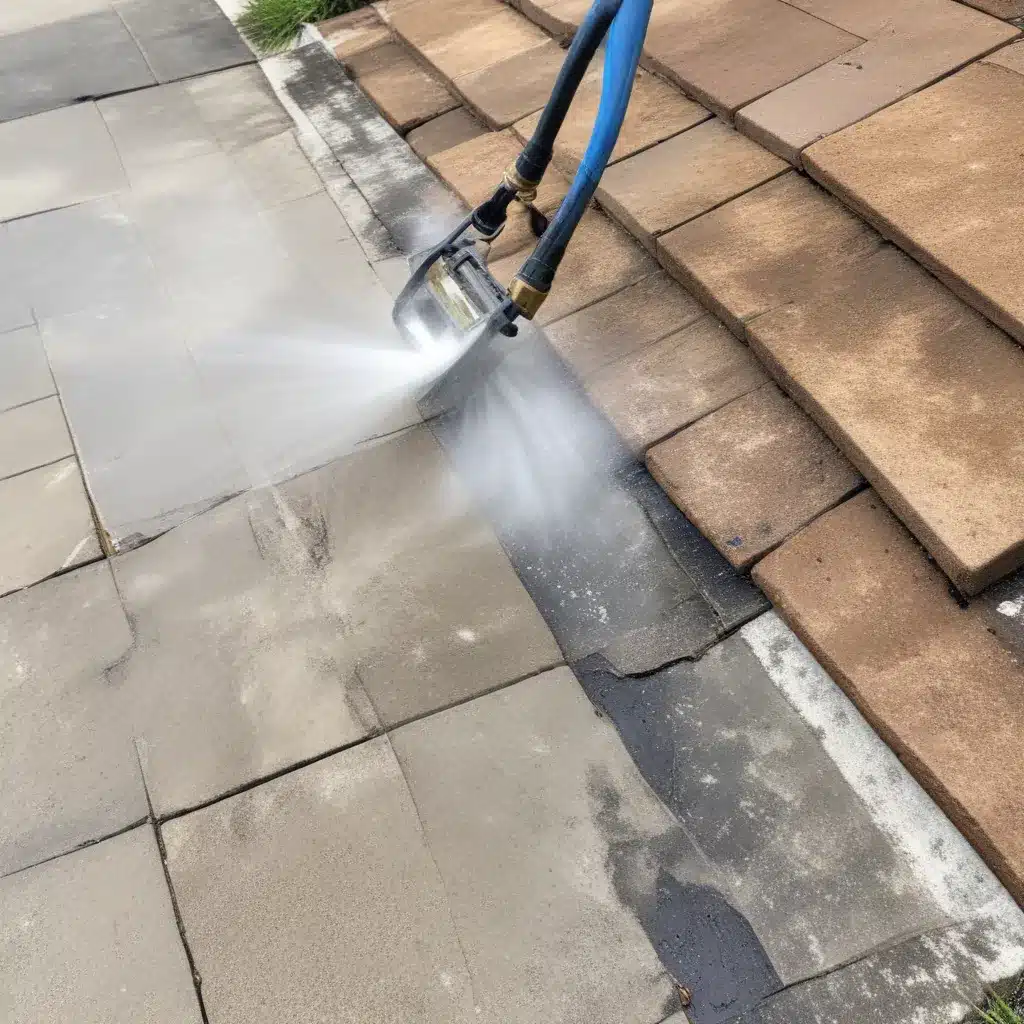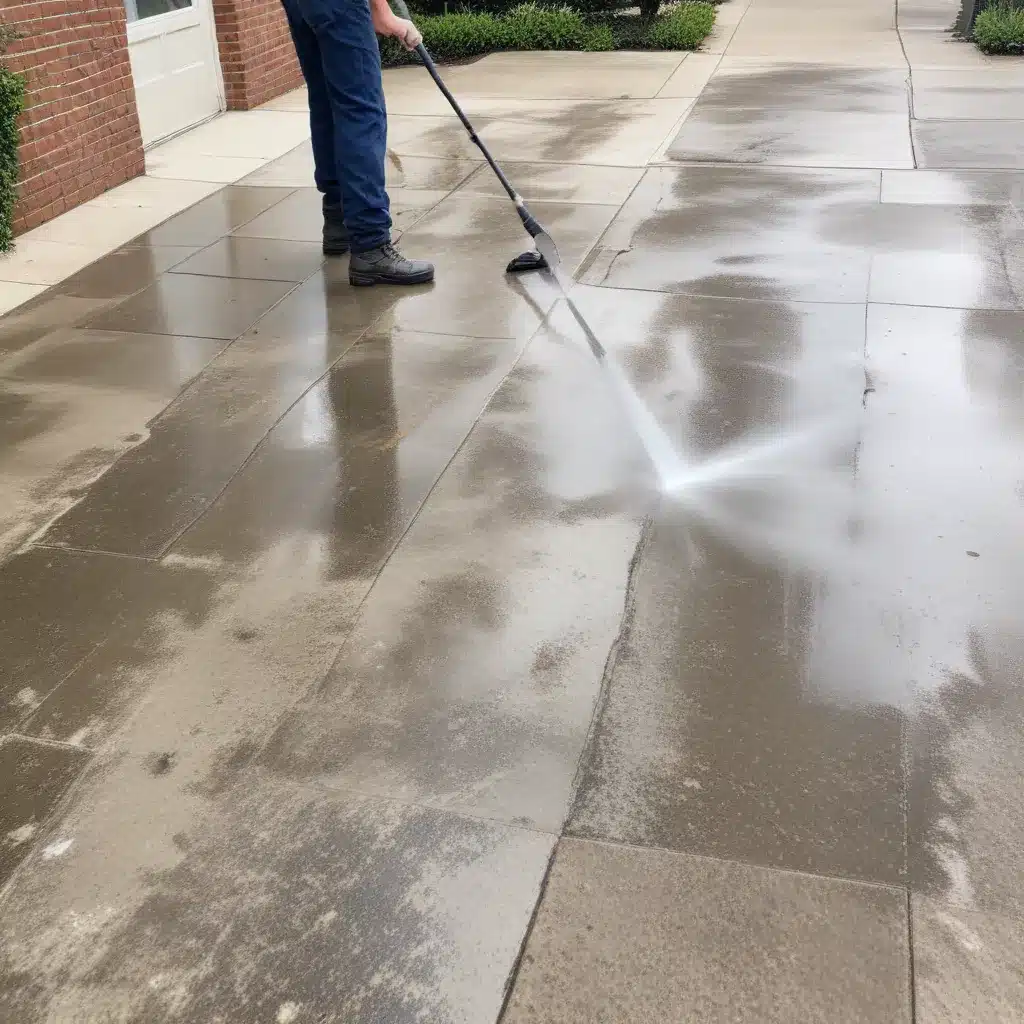
Understanding Local Regulations and Best Practices
In the bustling city of St. Louis, Missouri, maintaining the curb appeal of your property is not just a matter of personal preference, but also a crucial aspect of regulatory compliance. The local authorities in St. Louis have established a comprehensive set of guidelines and regulations governing the use of pressure washing services for outdoor structures, including wooden fences and gates.
As a homeowner or property manager, it’s essential to familiarize yourself with the applicable regulations to ensure that your pressure washing efforts are not only effective but also in line with the city’s standards. According to the St. Louis Department of Public Works, all pressure washing activities must adhere to the following guidelines:
-
Wastewater Disposal: The discharge of wastewater generated during pressure washing must be properly contained and disposed of in accordance with the city’s stormwater management regulations. This typically involves the use of a designated wastewater collection system or the implementation of on-site filtration and treatment measures.
-
Chemical Usage: The use of cleaning agents and chemicals during pressure washing must be limited to eco-friendly, biodegradable products that do not contribute to the pollution of local waterways or the environment. The St. Louis Department of Natural Resources provides a list of approved products for homeowners and contractors to reference.
-
Noise Regulations: Pressure washing activities should be conducted within the city’s designated noise ordinance limits, which typically restrict the use of power equipment to specific hours of the day. Residents and businesses must be mindful of the surrounding community and avoid causing undue disruption.
-
Safety Precautions: Pressure washing can be a hazardous activity, and it’s crucial to prioritize the safety of both the operator and any bystanders. Proper personal protective equipment (PPE), such as safety goggles, gloves, and non-slip footwear, must be worn at all times during the pressure washing process.
By understanding and adhering to these local regulations, homeowners and property managers in St. Louis can ensure that their pressure washing efforts are not only effective but also environmentally responsible and aligned with the city’s standards. Failure to comply with these guidelines may result in fines or other penalties, so it’s essential to stay informed and plan your pressure washing projects accordingly.
Evaluating Pressure Washing Techniques and Costs
When it comes to pressure washing wooden fences and gates in St. Louis, property owners have the option to choose between two primary techniques: manual cleaning and professional pressure washing. Each approach has its own advantages and considerations, and the choice ultimately depends on the specific needs and conditions of the outdoor structure.
Manual Cleaning:
– Description: Manual cleaning involves the use of a soft-bristle brush, mild detergent, and water to scrub the wooden surface and remove dirt, mildew, and other contaminants.
– Advantages: This method is generally more affordable, with the average cost ranging from $0.50 to $1.50 per linear foot of fencing. It also allows for more precise control and attention to detail, which can be beneficial for intricate or ornamental designs.
– Drawbacks: Manual cleaning can be labor-intensive and time-consuming, especially for larger fence or gate areas. Additionally, it may not be as effective in removing deeply embedded stains or stubborn buildup.
Professional Pressure Washing:
– Description: Professional pressure washing services utilize specialized equipment and techniques to apply high-pressure water to the wooden surface, effectively removing dirt, mildew, and other contaminants.
– Advantages: Pressure washing is typically more efficient and effective in restoring the appearance of weathered or heavily soiled wooden fences and gates. Professionals also have the expertise to adjust the water pressure and cleaning solutions to ensure the safety of the wood.
– Drawbacks: The average cost for professional pressure washing services in St. Louis ranges from $1.50 to $3.00 per linear foot, making it a more expensive option compared to manual cleaning. Additionally, improper use of pressure washing equipment can potentially damage the wood, so it’s essential to hire experienced and licensed contractors.
When considering the cost of pressure washing services in St. Louis, it’s important to factor in the size of the project, the condition of the wooden surfaces, and the level of cleaning required. For smaller or lightly soiled fences and gates, manual cleaning may be the most cost-effective solution. However, for larger areas or heavily weathered structures, professional pressure washing may be the better choice to ensure a thorough and long-lasting clean.
Eco-Friendly Cleaning Practices
As environmental awareness continues to grow, homeowners and property managers in St. Louis are increasingly seeking out pressure washing solutions that are not only effective but also eco-friendly. By adopting sustainable practices, individuals can contribute to the preservation of the city’s natural resources and the overall health of the local ecosystem.
One of the key considerations in eco-friendly pressure washing is the selection of cleaning products. The St. Louis Department of Natural Resources maintains a list of approved, biodegradable cleaners and detergents that are safe for use on wooden fences and gates. These products are formulated to minimize the impact on local waterways and groundwater, ensuring that the wastewater generated during the pressure washing process can be safely disposed of or recycled.
In addition to using eco-friendly cleaning solutions, pressure washing professionals in St. Louis also prioritize the responsible management of wastewater. This may involve the use of on-site filtration systems or the diversion of wastewater to designated collection points, where it can be properly treated and disposed of in accordance with the city’s stormwater regulations.
Another important aspect of eco-friendly pressure washing is the selection of equipment. Some pressure washing contractors in St. Louis have invested in technology that allows for the recirculation and reuse of water, reducing overall water consumption and minimizing the environmental impact of their operations.
By choosing eco-friendly pressure washing services, homeowners and property managers in St. Louis can not only maintain the visual appeal of their outdoor wooden structures but also contribute to the sustainability of the local community. This approach not only benefits the environment but also aligns with the city’s commitment to promoting green initiatives and protecting natural resources.
Maintaining Wooden Fences and Gates: A Long-Term Approach
Proper maintenance is the key to preserving the natural charm and longevity of wooden fences and gates in St. Louis. Regular cleaning, sealing, and repair are essential steps to ensure that these outdoor structures remain in optimal condition for years to come.
Cleaning and Sealing
Consistent cleaning, either through manual brushing or professional pressure washing, helps to remove accumulated dirt, mildew, and other contaminants that can degrade the wood over time. Experts recommend cleaning wooden fences and gates at least once a year, with more frequent maintenance for structures that are exposed to harsh weather conditions or located in high-traffic areas.
After cleaning, it’s crucial to apply a high-quality sealer or stain to protect the wood from the elements. In St. Louis, where the climate can be unpredictable, with hot and humid summers and cold, snowy winters, the application of a durable, water-resistant sealer is essential for preserving the structural integrity and aesthetic appeal of wooden fences and gates.
When selecting a sealer or stain, homeowners and property managers should opt for products that are specifically formulated for use on outdoor wood. These specialized coatings typically contain UV-blocking agents and mildew-resistant additives, which help to prevent fading, cracking, and other forms of weathering.
For best results, the sealer or stain should be reapplied every two to three years, or as recommended by the manufacturer. This regular maintenance routine will not only enhance the appearance of the wooden structures but also extend their lifespan, ultimately saving property owners time and money in the long run.
Repair and Replacement
Despite diligent maintenance, wooden fences and gates may occasionally require repair or replacement due to a variety of factors, such as age, exposure to the elements, or accidental damage. In such cases, it’s essential to address the issues promptly to prevent further deterioration and maintain the overall structural integrity of the outdoor structures.
Minor repairs, such as filling cracks or replacing individual boards, can often be handled by homeowners or property managers with some basic carpentry skills. However, for more extensive damage or complex repairs, it’s recommended to hire a professional fencing contractor who is familiar with the specific requirements and regulations for wooden structures in St. Louis.
In some instances, complete replacement of a wooden fence or gate may be the most practical solution. This decision should be based on a thorough assessment of the structure’s condition, taking into account factors such as the extent of rot, insect infestation, or structural instability. By working with a reputable fencing contractor, property owners can ensure that the new installation adheres to the city’s building codes and aesthetic guidelines, providing a long-lasting and visually appealing solution.
By incorporating regular cleaning, sealing, and timely repair or replacement into their maintenance routine, homeowners and property managers in St. Louis can safeguard the natural charm and functionality of their outdoor wooden fences and gates for years to come.
Conclusion
Maintaining the beauty and structural integrity of wooden fences and gates in St. Louis requires a multi-faceted approach that encompasses regulatory compliance, cost-effective cleaning techniques, and eco-friendly practices. By understanding the local guidelines, exploring the options for pressure washing services, and implementing a comprehensive maintenance plan, property owners can ensure that their outdoor structures remain in optimal condition, contributing to the overall aesthetic appeal and value of their properties.
Whether you choose to tackle the cleaning and maintenance tasks yourself or enlist the help of professional pressure washing services, the key to success lies in staying informed, making informed decisions, and prioritizing the long-term preservation of your wooden fences and gates. By following the best practices outlined in this article, you can confidently maintain the natural charm and curb appeal of your outdoor spaces, all while demonstrating your commitment to environmental sustainability and regulatory compliance within the vibrant city of St. Louis.
For more information on pressure washing services, exterior cleaning, and property maintenance in the St. Louis area, we invite you to visit https://pressurewashstlouis.com/. Our team of experts is dedicated to providing reliable, high-quality solutions that cater to the unique needs and regulations of the local community.






